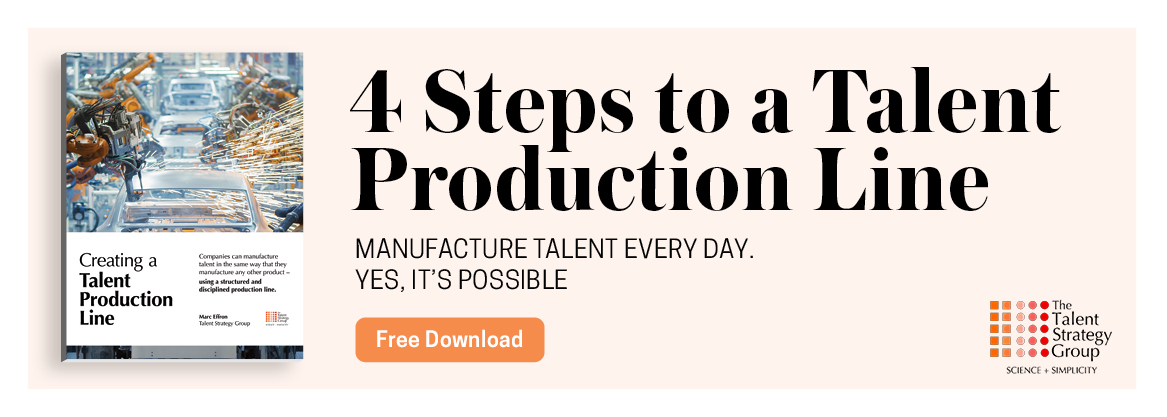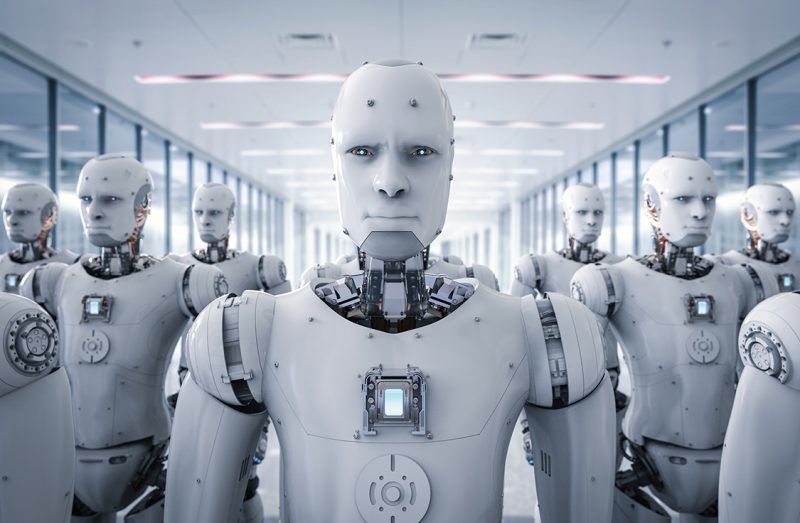How every smart organization should respond to looming automation. Step 1: Don’t panic.
By Kevin Oakes
If you haven’t yet made peace with the fact that a robot will be trying to take your job in the near or not-too-distant future, perhaps this statistic will wake you up: Research from McKinsey & Co. finds that between 75 million and 375 million workers globally will have to switch occupational categories and learn new skills within the next decade because of automation and the transition to robotics.
While robots proliferate, human jobs evaporate: Pew Research shows 72 percent of U.S. adults are worried about a future where robots can perform their duties; an Oxford University study says robots and smart computers could replace up to half the U.S. workforce within the next two decades. And a report from MIT and Boston University indicates that more than 670,000 American jobs have already been lost to bots displacing human labor.
Hey, you had a good run.
Physical robots in the vein of R2D2, Wall-E, and Rosie from The Jetsons usually bear the brunt of our fears and concerns, but it’s the invisible robots that are the real threat. And workforce planning professionals need to start, well, planning their counterattack. Artificial intelligence (AI) currently reins as the most overused—and misused—buzzword in business.
Sign up for the monthly TalentQ Newsletter, an essential roundup of news and insights that will help you make critical talent decisions.
What does the impending robot takeover mean from a talent pipeline perspective? For starters, it would be foolish to not start thinking about the AI skills that will be needed in the future, as well as the jobs or tasks that AI will replace.
That list is rather expansive: According to projections from the World Economic Forum (WEF), AI and robots will be capable of translating languages by 2024, writing high school essays by 2026, driving trucks by 2027, running 5K races against humans by 2029, and working in retail by 2030.
The WEF predicts there’s a 50 percent chance AI will outperform humans in all tasks in 45 years’ time, as well as a 50 percent chance that all jobs will be automated by AI in 120 years, for good measure. Not all markets will feel the impact equally.
In a study, PriceWaterhouseCoopers (PWC) found the transportation and storage, manufacturing, and wholesale and retail industries are the most at risk of being wiped obsolete by machines that lack the capacity to feel. PWC also reports 61 percent of jobs in the financial industry could be flat-out eliminated and replaced by robots.
But as I spout off all these sobering stats, I can’t help but think back to another point in time when robot hysteria was all the rage, and the financial services industry was expected to be taken over by machines. Fortunately, that didn’t happen—and it’s why I think some of the doom and gloom may be a bit overblown.
When I was growing up in the 1970s, my dad was a banking executive in Massachusetts. His bank, like several others, began rolling out newfangled cash dispensing devices, which we eventually called automated teller machines (ATM).
By the middle of the ’90s, ATMs were everywhere. Their name implied that they were going to send all bank tellers to the unemployment line, but a funny thing happened: Since 2000, not only have teller jobs increased, but they’ve actually grown faster than the labor force as a whole.
This is mostly what has happened throughout history. Technology often automates “tasks,” but usually doesn’t eliminate an entire job—it just changes the nature of that job. For talent management professionals, it’s important to make the distinction between automating an existing job versus technology making a job obsolete, which mere humans often confuse. (The only people who should truly hate automation are ex-elevator operators: In 1950 there were about 97,000 registered in the U.S. Census, but almost none exist today.)
Research backs up this notion. In a recent report, McKinsey analyzed the automation potential of more than 2,000 work activities across 800 occupations and found that fewer than 5 percent of all jobs could be automated entirely using the technologies available today. Meanwhile, 60 percent of occupations could be partially automated by about 30 percent.
So how should organizations respond to robots? By upskilling and reskilling. When researchers at ManpowerGroup recently surveyed 18,000 global employers, they discovered that the majority of companies are teaching their current workers new skills to avoid losing them to automation.
To upskill, 74 percent are offering internal training, while 39 percent say they’re hiring outside experts to transfer new skills and capabilities to employees. Some organizations are bypassing the training route. Forty-four percent of companies are recruiting people with additional skill sets, 29 percent are replacing their workforce with people who have the right skill sets, and 23 percent find it easier to simply outsource business functions to third parties.
New research from the Institute for Corporate Productivity and the Association for Talent Development shows more than 50 percent of high-performance organizations are providing upskilling and reskilling services to their employees in light of future automation, versus a mere 12 percent of low-performance organizations. The high performers cited the ability to retain talent, improved overall organization performance, and improved engagement levels as the biggest benefits to upskilling and reskilling.

Ultimately, when it comes to AI and robotics, the people and non-people issues will require strategic planning in any organization. This is one of the reasons we now see a trend toward establishing the role of chief robotics officer (CRO). While the scope and responsibilities of the CRO will vary from industry to industry, it’s clear that many organizations will be enhanced by the oversight, accountability, and strategic initiative of this role.
Organizations will also benefit from the foresight that talent professionals can give to the critical and pivotal roles they need to retain and have adequate bench strength for, as well as the thought given to tasks and roles that are likely to be automated in the near term. Luckily, a CRO will be able to assist in those discussions.
Now let’s see a robot do that.
Kevin Oakes is the CEO of the Institute for Corporate Productivity, the fastest-growing and largest corporate network focused on the practices of high-performance organizations. He has been a leader in the human capital field for the last two decades, and was previously the Founder of SumTotal Systems.


